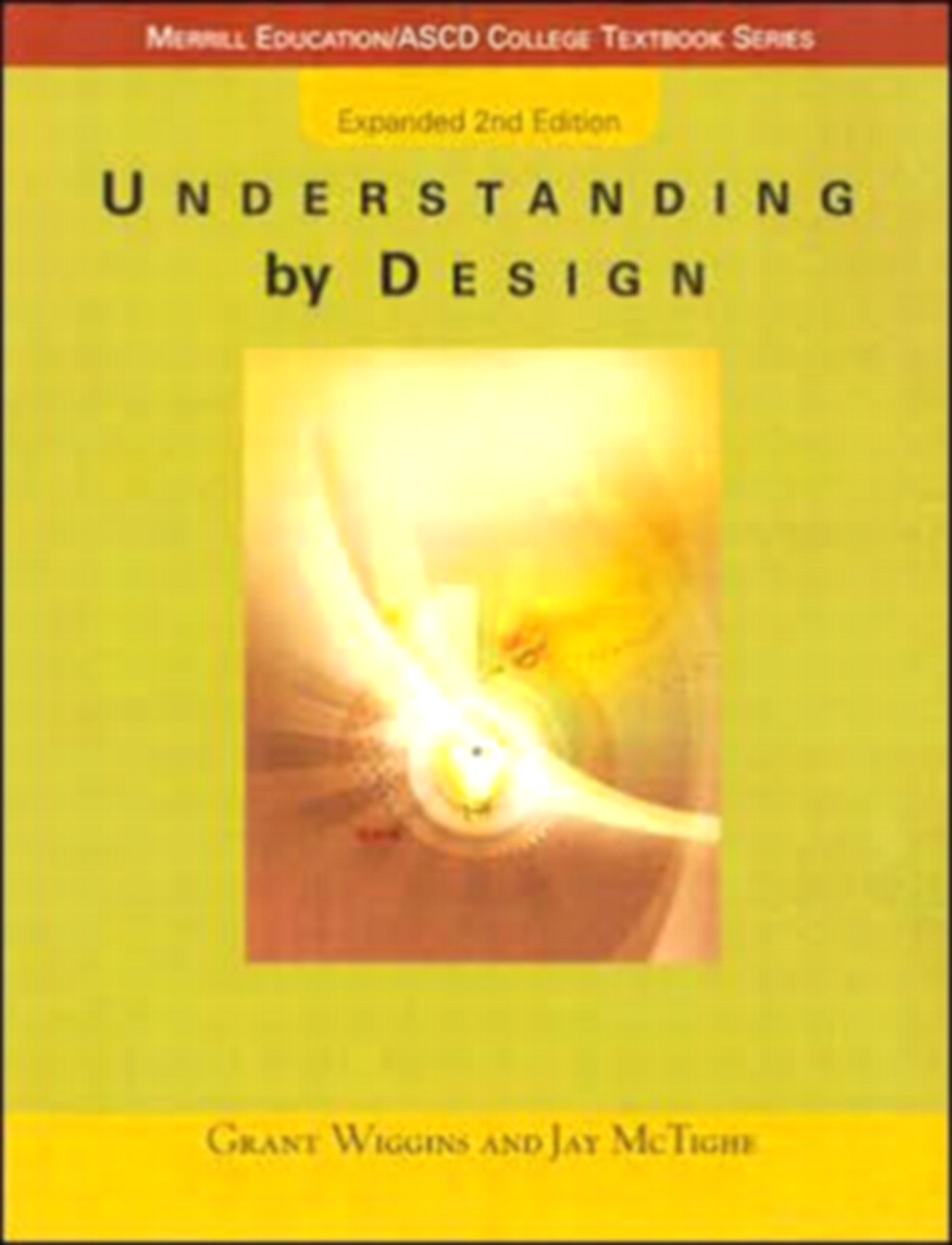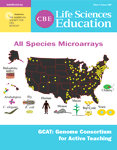Understanding by Design: A Framework for Effecting Curricular Development and Assessment
Abstract
Successful learning outcomes require the integration of content and meaningful assessment with effective pedagogy. However, development of coherent and cohesive curriculum is seemingly overwhelming even to experienced teachers. Obviously this creates a barrier to successful student learning. Understanding by Design (UbD) overcomes this impasse by providing concise and practical guidance for experienced and inexperienced teachers. In programs sponsored by the National Science Foundation and the National Institutes of Health, teams composed of University of Wyoming graduate students and science teachers from grades 6 to 9 designed motivating, inquiry-based lesson plans intended to get students to think and act like scientists. In this process, teams utilized principles outlined in UbD with great success. UbD describes a practical and useful “backward” design process in which anticipated results are first identified; acceptable evidence for learning outcomes is established and, only then, are specific learning experiences and instruction planned. Additionally, UbD provides procedures to avoid content overload by focusing on “enduring principles.” WHERE, the UbD sieve for activities, was used effectively to develop tasks that are engaging, that are consistent with state educational standards, and that promote self-directed, life-long learning.
INTRODUCTION
Translation of best practices in learning and assessment to effective curriculum design is a major barrier in successful teaching. Creative approaches must be used to embed opportunities for inquiry, innovative problem solving, and critical thinking into a backbone of deep discipline knowledge. Curriculum also must be cohesive and coherent across multiple grades. Importantly, assessment protocols to establish the degree of success in reaching the desired learning outcomes must be integrated into curricular units. Understanding by Design (UbD) by Grant Wiggins and Jay McTighe provides a framework that systematically addresses these key issues in a practical manner (Wiggins and McTighe, 1999).
At the University of Wyoming (UW), GK–12 and Science Education Partnership Award (SEPA) projects jointly funded by the National Science Foundation and the National Institutes of Health, respectively, and the UW Graduate School, link graduate students and secondary science teachers in the development and delivery of innovative and motivating lesson plans. The overarching goals of the plans are to get students to think and act like scientists and address state science standards. The collaboration between the graduate students and the teachers brings cutting-edge science to secondary science classrooms in a meaningful way that promotes understanding, motivation, and self-directed learning.
WHAT ARE OUR CONSTRAINTS?
The graduate students have extensive science knowledge but lack a background in pedagogy. Thus, it became quickly apparent that further guidance was required on how best to integrate and present key science concepts within defined classroom activities and to integrate meaningful assessment of student learning outcomes.
WHAT IS “UNDERSTANDING BY DESIGN”?
The application of the principles outlined in UbD allowed the graduate student–teacher teams to effectively address these issues. UbD promotes a “backward” design process that begins with identifying the enduring understandings that students should carry from the class. What is it that a teacher wants students to remember and be able to apply a semester after they leave a course? What are the big ideas that transcend the course?
Specifically, UbD emphasizes the teacher's critical role as an assessor and designer of student learning. Numerous graphic organizers, assessment prompts, review protocols, and curriculum-mapping tools are provided that engage the teacher in this role. UbD offers the following three-stage backward planning curriculum design process.
Stage 1:Identify desired results focuses on identifying the enduring concepts and desired student outcomes before outlining specifics of the lesson plan. Enduring concepts are important ideas or core processes that are transferable to new situations, have lasting value beyond the classroom, are at the heart of the discipline, and are often abstract, counterintuitive, and misunderstood. What should students know, understand, and be able to do? What is worthy of understanding? This approach avoids two critical errors in teaching: textbook coverage or teaching for rote memorization and activity-based teaching that may be engaging but has no clear priorities. Ideas are provided for differentiating enduring understandings from the knowledge and skills supporting those understandings and from second-level skills or factual knowledge.
Stage 2:Determine acceptable evidence concentrates on the variety and depth of assessment tasks that are needed to validate that the student has achieved the desired enduring understanding. How will a teacher know if students have achieved the desired results? Students reveal understanding when they participate in complex, authentic opportunities to engage in the six facets of understanding identified by Wiggins and McTighe:
Explanation provides thorough, supported, and justified accounts of phenomena, facts, and data.
Interpretation is designed to personalize information, contributing to relevancy and long-term retention.
Application provides opportunities to utilize and apply understanding in diverse contexts.
Perspective sees points of view through critical eyes and ears, the big picture.
Empathy finds value in what others might find odd, alien, or implausible; i.e., to perceive sensitively on the basis of prior direct experience.
Self-knowledge recognizes that personal style, prejudices, projections, and habits of mind shape and impede one's own understanding.
Meaningful assessment requires a variety of tools, including informal checks in class, observation and student dialogue, formal quizzes and tests, academic prompts, and open-ended assessment tasks. GRASPS (goal, role, audience, situation, product or performance, standards for success) is provided as a prompt for the teacher in constructing quality performance tasks scenarios. UbD then embarks on an in-depth discussion of designing appropriate scoring rubrics. Effective rubrics relate specific task requirements to more general performance goals, discriminate among different degrees of understanding or proficiency, do not combine independent criteria, and include all potential performance outcomes differentiating from novice to expert. The more open-ended the assessment tasks, the more essential a strong rubric becomes.

Stage 3:Plan learning experiences and instruction occurs when enduring understandings and appropriate evidence of understanding culminate in an effective instructional activity. It is often the case that assessment in the classroom begins with stage 3, where a teacher's favorite activity is conducted in class without consideration of expected outcome or adequate assessment. The backward design process flips from starting at stage 3 to beginning at stage 1 and moving to stage 3. The driving factor is the enduring concept, not the activity. Stage 3 essentially asks, “What activities will equip students with the desired knowledge and skills?” This requires the teacher to consider the intersection of engaging tasks and effective tasks. Activities at this intersection motivate students to explore understandings and misconceptions.
The sieve for activity design is called WHERE. How will you help students know Where they are headed and Why? How will you Hook students through engaging and thought-provoking experiences? What events, real or simulated, can students Experience to make the ideas and issues real? What learning activities will help students to Explore the big ideas and essential questions? What instruction is needed to Equip students for the final performance? How will you cause students to Reflect and Rethink to dig deeper into the core ideas? How will you guide students in Rehearsing, Revising, and Refining their work based on feedback and self-assessment? How will students Exhibit their understanding about their final performances and products? How will you guide them in self-Evaluation to identify the strengths and weaknesses in their own work and set future goals?
HOW DID WE USE UbD?
By following the frameworks outlined in UbD, our graduate students were able to transform their original lesson plans into a form more useful and functional for teachers and more valuable for students. One graduate student commented that “By first identifying enduring understandings, and then selecting assessments to show evidence of that learning, the daily activities fall into place and are often synonymous with the assessment.” By using UbD's backward design process as a guideline, Liz Flaherty, a Ph.D. candidate in Zoology and Physiology, transformed her lesson plan, “What is Alive in an Ecosystem?” from a one-page outline to a useful plan for teachers that included enduring ideas (“The students will be able to understand and define an ecosystem by describing and identifying the main components such as consumers, producers, and decomposers.”), activities developed using the UbD WHERE design (“students will establish the decomposers, producers, consumers, and predators for their ecosystem. The students will then write testable hypotheses and try to predict what will happen if they change populations and what possible trends of change they might see. Finally, the students will create figures describing their results for the presentations.”), and formal and informal assessment rubrics that measure true understanding of the topic.
UbD CAN APPLY IN OTHER CONTEXTS
The backward design process developed and described by McTighe and Wiggins (2006) has useful application beyond the development of lesson plans for the classroom. The graduate students and teachers have used the design process to help develop science podcasts for students, radio advertisements, and articles. By beginning with and identifying the enduring understandings before determining the “necessary (enabling) knowledge” (McTighe and Wiggins, 2004), UbD has helped us develop many useful products that have advanced our goals in science education more efficiently and effectively.
ACKNOWLEDGMENTS
We thank Ken Steinken (UW Graduate Student in Creative Writing). The programs at UW are supported by National Science Foundation Grant DGE-0538642 and National Institutes of Health Grant 1 R25 RR022740-01. Additional UbD materials can be found online at www.ubdexchange.org.



